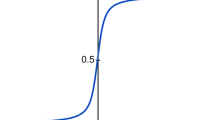Abstract
This paper examines data derived from an application on Facebook.com that investigates the relations among members of their online social network. It confirms that online social networks are more often used to maintain weak connections but that a subset of users focus on strong connections, determines that connection intensity to both connected people predicts perceptual accuracy, and shows that intra-group connections are perceived more accurately. Surprisingly, a user’s sex does not influence accuracy, and one’s number of friends only mildly correlates with accuracy indicating a flexible underlying cognitive structure. Users’ reports of significantly increased numbers of weak connections indicate increased diversity of information flow to users. In addition the approach and dataset represent a candidate “ground truth” for other proximity metrics. Finally, implications in epidemiology, information transmission, network analysis, human behavior, economics, and neuroscience are summarized. Over a period of two weeks, 14,051 responses were gathered from 166 participants, approximately 80 per participant, which overlapped on 588 edges representing 1341 responses, approximately 10% of the total. Participants were primarily university-age students from English-speaking countries, and included 84 males and 82 females. Responses represent a random sampling of each participant’s online connections, representing 953,969 possible connections, with the average participant having 483 friends. Offline research has indicated that people maintain approximately 8-10 strong connections from an average of 150-250 friends. These data indicate that people maintain online approximately 40 strong ties and 185 weak ties over an average of 483 friends. Average inter-group accuracy was below the guessing rate at 0.32, while accuracy on intra-group connections converged to the guessing rate, 0.5, as group size increased.
Access this chapter
Tax calculation will be finalised at checkout
Purchases are for personal use only
Preview
Unable to display preview. Download preview PDF.
Similar content being viewed by others
References
Boyd, D.M., Ellison, N.B.: Social network sites: Definition, history, and scholarship. Journal of Computer-Mediated Communication 13, 11 (2008)
Golder, S.A., Wilkinson, D., Huberman, B.A.: Rhythms of social interaction: Messaging within a massive online network. In: Steinfield, C., et al. (eds.) Proceedings of Third International Conference on Communities and Technologies, pp. 41–66. Springer, London (2007)
Feld, S.: The Focused Organization of Social Ties. The American Journal of Sociology 86, 1015–1035 (1981)
Lewis, K., et al.: Tastes, ties, and time: A new social network dataset using Facebook.com. Social Networks 30, 330–342 (2008)
Ellison, N., Steinfield, C., Lampe, C.: The benefits of Facebook ‘friends’: Exploring the relationship between college students’ use of online social networks and social capital. Journal of Computer-Mediated Communication 12, 1 (2007)
Stone, B.: Is Facebook Growing Up Too Fast?” The New York Times March 29 (2009), http://www.nytimes.com/2009/03/29/technology/internet/29face.html?ref=technology
Wellman, B., Haase, A., Witte, J., Hampton, K.: Does the Internet Increase, Decrease, or Supplement Social Capital? American Behavioral Scientist 45, 436–455 (2001)
Donath, J., Boyd, D.M.: Public displays of connection. BT Technology Journal 22(4), 71–82 (2004)
Primates on Facebook. The Economist, http://www.economist.com/science/displaystory.cfm?story_id=13176775
Granovetter, M.: The strength of weak ties. American Journal of Sociology 78, 360–380 (1973)
Freeman, L.C., Freeman, S.C., Michaelson, A.G.: On human social intelligence. Journal of Social and Biological Structures 11, 415–425 (1988)
Janicik, G.A., Larrick, R.P.: Social network schemas and the learning of incomplete networks. Journal of Personality and Social Psychology 88, 348–364 (2005)
Author information
Authors and Affiliations
Editor information
Editors and Affiliations
Rights and permissions
Copyright information
© 2010 Springer-Verlag Berlin Heidelberg
About this chapter
Cite this chapter
Green, T., Quigley, A. (2010). Perception of Online Social Networks. In: Ting, IH., Wu, HJ., Ho, TH. (eds) Mining and Analyzing Social Networks. Studies in Computational Intelligence, vol 288. Springer, Berlin, Heidelberg. https://doi.org/10.1007/978-3-642-13422-7_6
Download citation
DOI: https://doi.org/10.1007/978-3-642-13422-7_6
Publisher Name: Springer, Berlin, Heidelberg
Print ISBN: 978-3-642-13421-0
Online ISBN: 978-3-642-13422-7
eBook Packages: EngineeringEngineering (R0)




